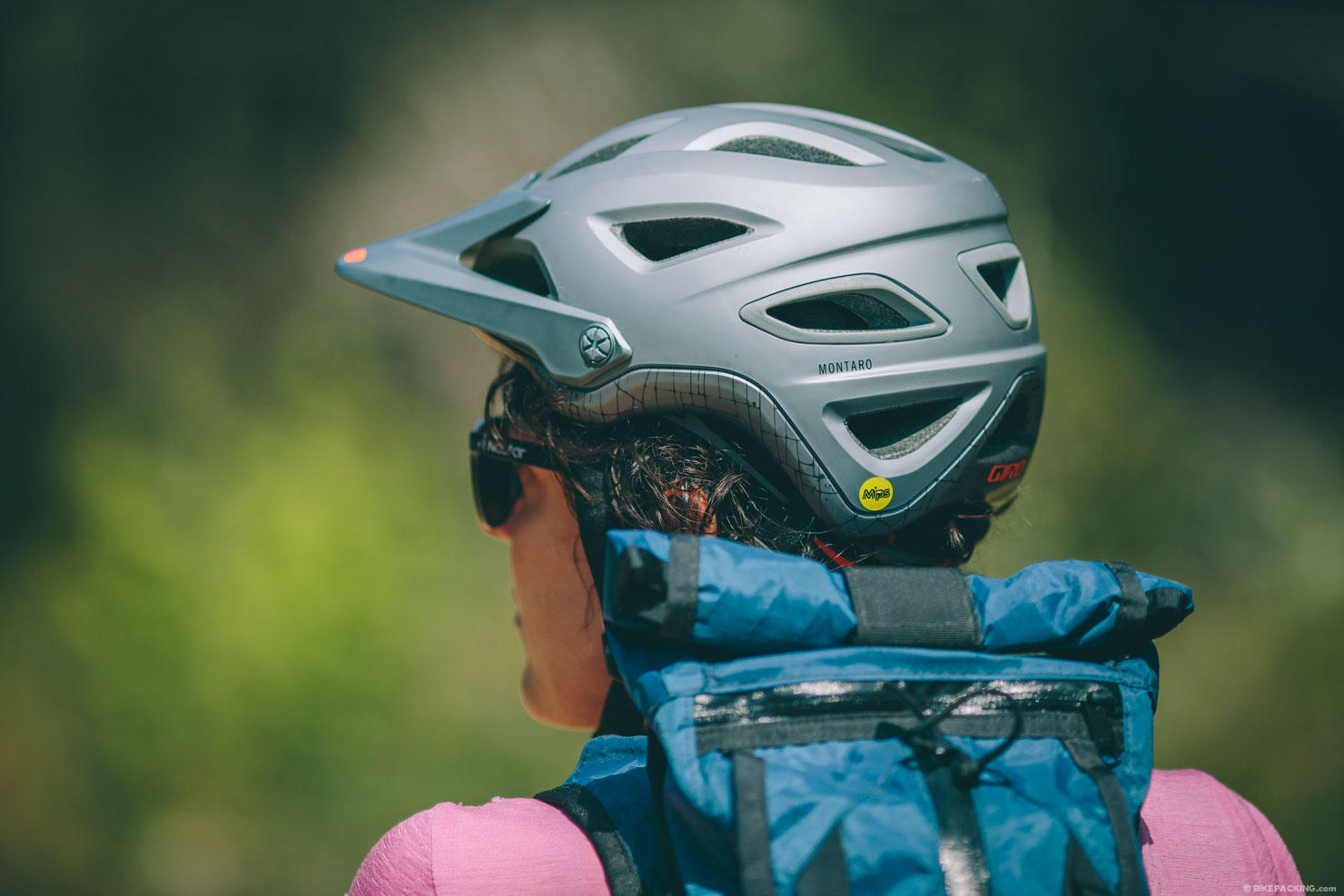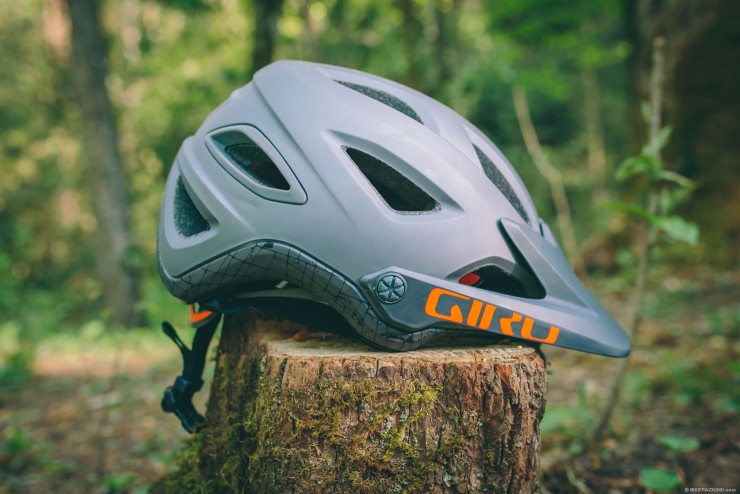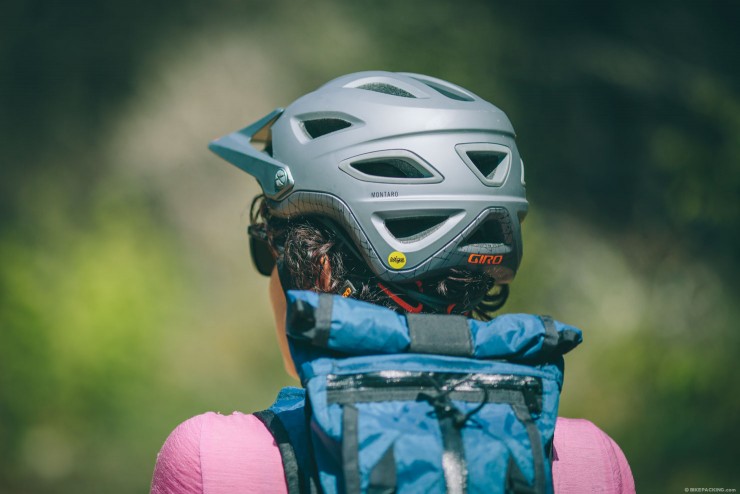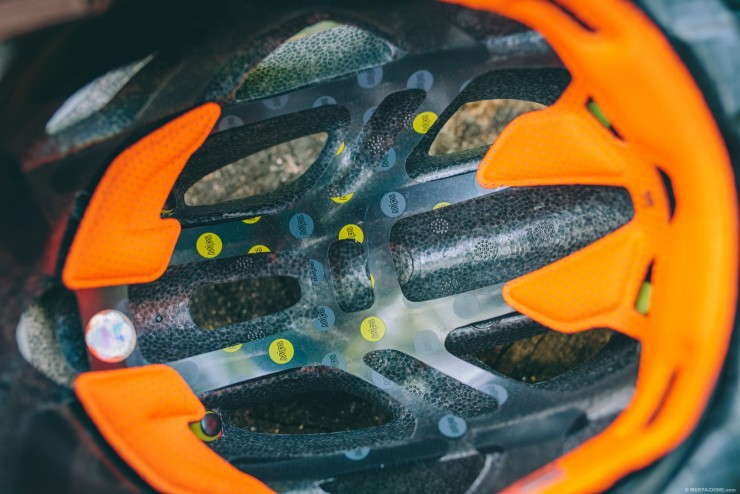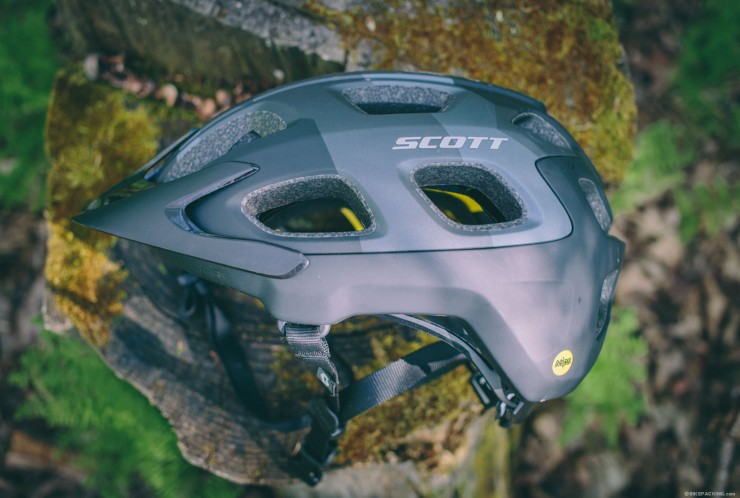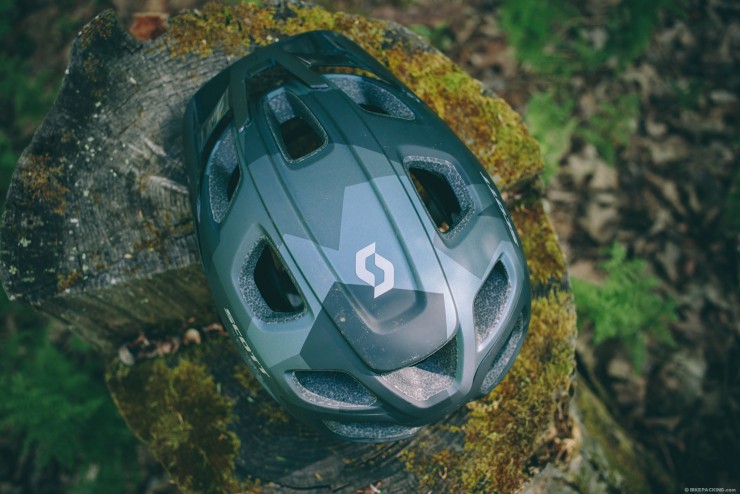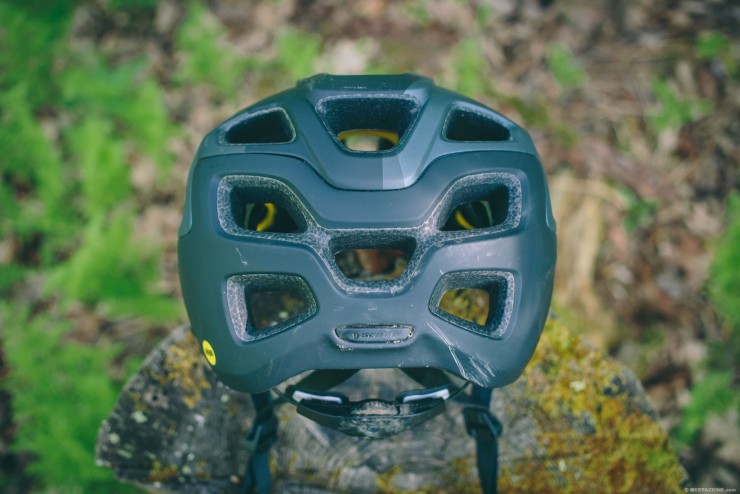Backcountry Brain Buckets, MIPS, & Drooling on Oneself
Interested in the latest in bike helmet technology? We have a look at the Multi-directional Impact Protection System – and take three ‘MIPS’ helmets out bikepacking.
There are a few days from the summer of my 12th year that are completely erased from memory. Apparently I had my black and red Schwinn 10-speed at full gate when the accident occured. After a friend found me at the bottom of a hill, straddling the thin line between consciousness, and drooling on myself, I was rushed to the ER and held in the hospital for over a week. As it turns out, I was just inches away from being in a coma due to significant brain trauma. Yeah, yeah, that explains a lot… I know. Oddly, what drives me nuts about the whole event is not knowing what caused the actual crash. Perhaps I was tackled by a giant 18 point buck crossing the road. That’s what I’d like to think. Who knows? At any rate, these days I almost always wear a helmet when I ride, save the occasional slow climb in the heat or a boring flat dirt road day when I am being particularly stupid. Don’t get me wrong, this isn’t a pulpit to preach about helmet use. To each his or her own. But, I will say that you never know when something is going to send you over the handlebars… a sudden flat tire, a distracted driver, a crazed deer. Personally, I’d rather not be found drooling on myself again.
Over the last decade I’ve been through a multitude of helmets. Usually they meet their retirement by way of breaking. A strap connection breaks, the tightening gizmo stops working, or they just become disgusting and the cloth padding rots away. That’s probably a good thing. Perhaps it’s an industry conspiracy and they are designed to self destruct in order to force us to pony up for the latest and greatest. During my most recent exercise in replacement, I discovered that the current crop of helmet offerings are far superior to even those that were around just a couple years ago. Engineering and design advances have led to better fit and adjustments, more coverage, interesting designs, and MIPS.

Brain injury in the sport of cycling is no joke. In fact, cycling-related accidents result in more head injuries than any other sport. In the United States, head injuries account for over 60% of cyclist deaths, two-thirds of bicycle-related hospital admissions, and one-third of hospital emergency visits for bicycle injuries. (CDC) Although there are some dissenting opinions on the topic, a preponderance of scientific research confirms that the consistent use of well fitted helmets greatly reduces (by 63-88%) the morbidity and mortality associated with cycling-related accidents. But, what about the helmets’ design? Will any helmet do?
Helmets have traditionally been designed to protect the head from focal brain injuries, those that are caused by a direct impact akin to head butting a cement wall. The helmet’s polystyrene compresses on impact and thereby reduces “linear acceleration.” Simple enough, but, unfortunately cycling accidents more often result in off-center impact. This type of of angular or rotational acceleration injury can cause widespread axonal (neuron) injury and subdural haematomas (collections of blood between the covering of the brain (dura) and the surface of the brain) that result in death or permanent cognitive damage.
MIPS was founded in 2001 at the Royal Institute of Technology in Stockholm as a simple yet potentially brain-saving breakthrough. The technology was born from an appreciation of the means by which our brains are inherently protected… A thin layer of fluid (cerebrospinal fluid) that buffers it from the interior of the skull, allowing a fluid and floating rotation.
Instead of CSF, MIPS relies on a thin plastic liner that’s attached to the interior of the helmet shell via several floating attachment points. These points allow the liner to rotate or slide with the head on impact, in turn reducing the impact and force that often causes brain trauma.
So, does it work? As for the medical community, the verdict is still out on how effective MIPS technology is. To me, the science seems pretty solid and worth the modest investment…my neurons are pretty happy right where they are. Here are three MIPS helmets we’ve tried over the last few months and are pretty happy with, for various reasons:
Giro Montaro MIPS Helmet
The Montaro is one of the first MIPS helmets that caught our attention. We’ve always been fans of Giro’s helmet offerings and the Giro Montaro MIPS continues in the tradition clean and stylish helmets, if there is such a thing. In addition to MIPS, the Montaro features a trail-worthy full coverage design adding a bit more protection towards the base of the skull.
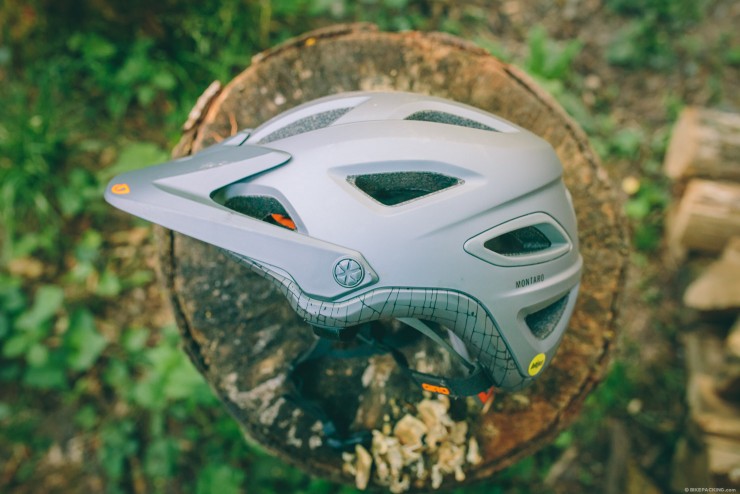
Additional features include a very user friendly visit that offers quite a bit of sun protection, 16 vents that seem to do well keeping sweat at bay, and a redesigned Roc Loc retention system that’s far superior to their old design. The Montaro MIPS is available in small, medium, and large.
“It’s always hard to find a helmet that doesn’t transform me into an odd rendition of a spaceman. But I must say that I am impressed with the Montaro MIPS. It’s probably the most comfortable helmet I’ve worn to date, and it doesn’t look like there’s a half watermelon precariously perched atop my head. And while—fortunately—I can’t attest to the protection qualities of the MIPS system, I trust that it’s there to do the job.” – Virginia
- Weight 394g
- Price $150.00
- Place of Manufacture China
- Contact Giro.com
- Standout Feature MIPS technology/clean looks
Scott Vivo Plus (MIPS)
The Scott Vivo is on the more minimal side of ‘trail’ specific helmets. It does offer additional coverage at the lower back, but not too much. It’s also the lightest of the offerings shown here. Scott’s MRAS2 fit system keeps it snug and has a fairly large dial that’s easy to adjust on the fly. There are 17 vents in the helmet, most of which tare at the back, which makes sense for expelling air while moving. The visor is rather small and fixed to the helmet which might be a little frustrating to some.
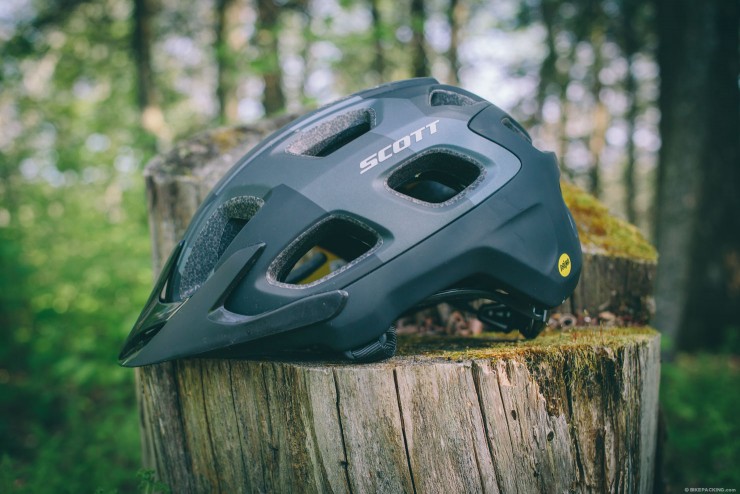
The Vivo Plus also has a nice strap system with locking sliders at the side allowing the tension to be adjusted depending on your anatomy. The Vivo is available in small, medium, or large in a variety of four different color combinations. The one shown in these photos is the Black Camo pattern.
“Overall, the Vivo Plus is my favorite helmet I’ve had to date. It’s extremely lightweight, minimal, and the looks match those qualities. It also seems pretty solidly built, despite the low weight. I really wish it had a slightly bigger adjustable visor though.” – Logan
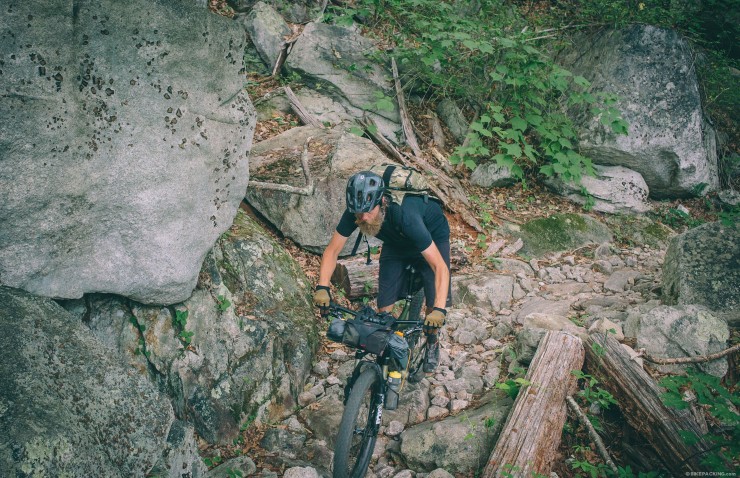
- Weight 320g
- Price $130.00
- Place of Manufacture China
- Contact scott-sports.com
- Standout Feature MIPS/good aesthetics/lightweight
Specialized Airnet MIPS
In name at least, the Airnet harkens back to the days of the ‘Hairnet Helmet‘ prevalent in the 70s and 80s, echoed by a somewhat retro styling too. But that’s where a fondness for yesteryear ends, given the Airnet’s up-to-the-minute MIPS insert, and the fact that it’s designed in Specialized’s company windtunnel, sculpted into a shape that will help skim valuable seconds in your local TT, or so it’s claimed. Not that its aero credentials are likely to be of that much interest to trail-orientated bikepackers. Rather, multi day riders are likely to be won over by it’s undeniable comfort, thanks to a generous supply of padding made from luxuriously soft merino, its airy, well ventilated shape, and an extremely comfortable, easily adjusted ‘Mindset’ rear cradle.
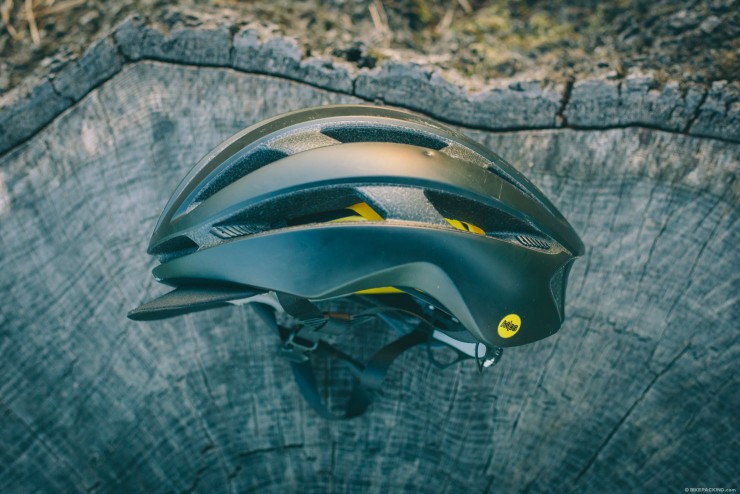
On the downside, the Airnet’s not the lightest helmet in its class. But at least it’s packed with features. These include sunglass grippers at both the front and rear, as well as a removable, padded visor – flip it up or down, depending on needs or style. Colors wise, it’s available in Safety Ion/Black, White and Black.
The Airnet is probably the most comfortable helmet I’ve ridden in. Styling is more retro road than mtb, not that it’s stopped me from using it for all kinds of bikepacking, both on and off road. Although the side webbing isn’t adjustable, the ‘Mindset’ ratchet system works so well that the helmet stays firmly in place over the bumpiest of trails. It’s also easy to loosen off, one handed, when I’m tackling a hot and sweaty climb. The removable, cleanable peak is a nice touch, as is the extra padding, made from odour fighting merino. Perfect for multi-day bikepacking!” – Cass
- Weight 360g
- Price $170.00
- Place of Manufacture China
- Contact specialized.com
- Standout Feature MIPS/flip visor/comfortable
Please keep the conversation civil, constructive, and inclusive, or your comment will be removed.






